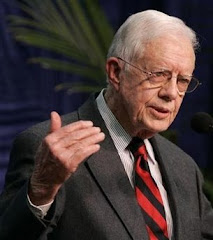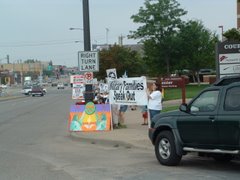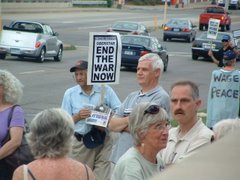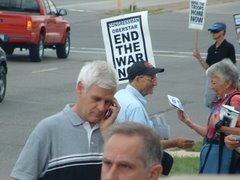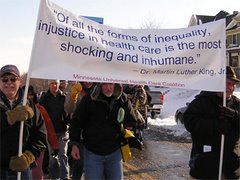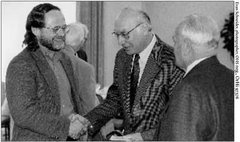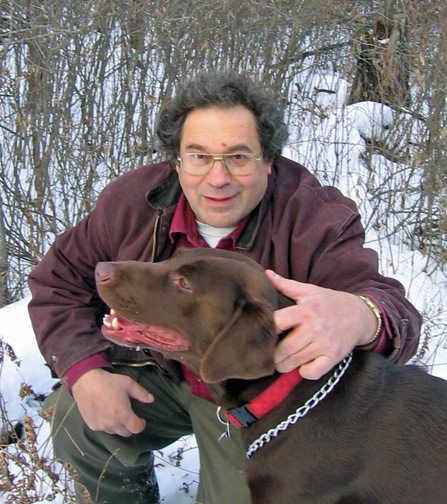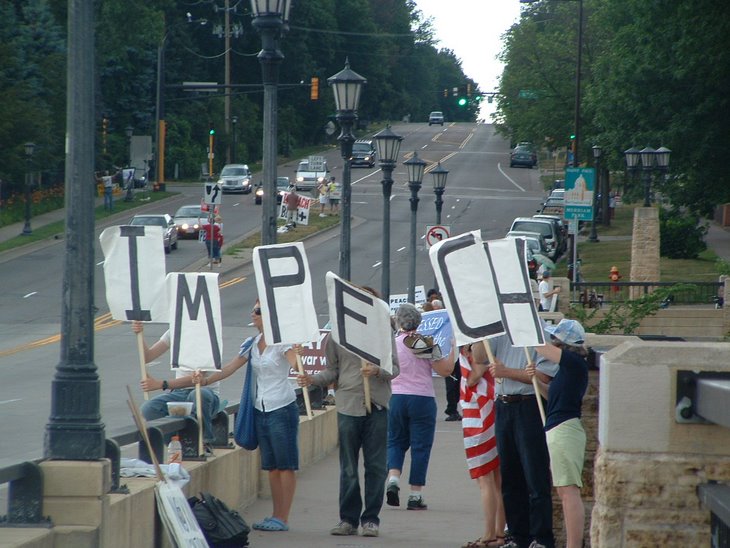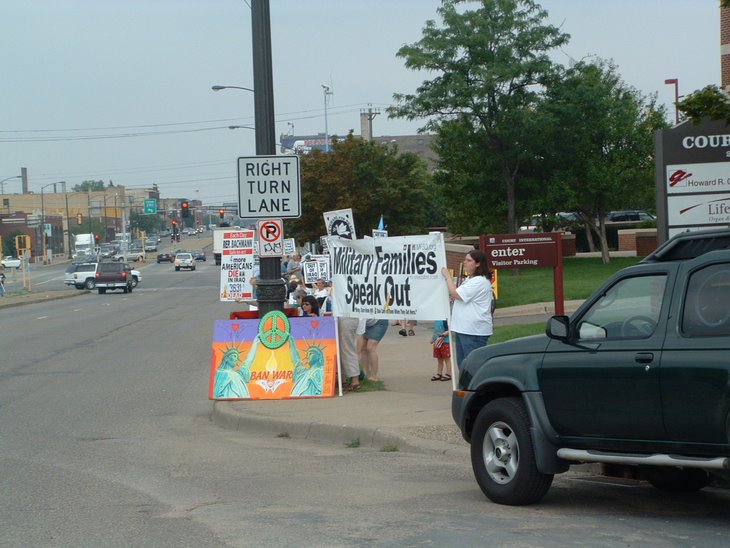Following this article in today's Star Tribune, please find the letter that was sent to Mark Dayton along with a YouTube video.
MnDOT audit finds rampant trouble with women and minority contracting program
-
Article by:
JIM ANDERSON
, Star Tribune
- Updated: September 22, 2013 - 7:11 AM
Program designed to give women- and minority-owned business a leg up is rife with problems, MnDOT finds.
 hide
hide
A St. Croix bridge contract was the subject of a lawsuit after the low bidder lost out over DBE issue.Minnesota has failed for three years to
meet federal requirements for a program designed to steer millions of dollars in state transportation projects to minority- and women-owned
businesses.
.
The program has been so plagued by
mismanagement and weak oversight that some firms were awarded
multimillion dollar contracts for which they might not have otherwise
qualified.
In one case, nearly $1.6 million for buying materials on the Union Depot project in
St. Paul
was funneled through a minority- or women-owned firm to a
non-minority-owned contractor. In another case on the same project,
nearly $2 million was improperly credited to a non-minority-owned firm.
The findings and others, included in an
internal audit of the Disadvantaged Business Enterprise (DBE) program,
have led to a shake-up in the Minnesota Department of Transportation’s
Office of Civil Rights and may result in additional investigations.
“This is absolutely a wake-up call,” said state Sen. Scott Dibble, DFL-
Minneapolis,
chairman of the Transportation and Public Safety Committee. Given the
gravity of the issues raised by MnDOT’s internal audit, Dibble said he
may ask the Legislative Auditor’s Office to conduct its own independent
review.
Transportation department officials said
they are moving quickly to address the shortcomings cited in the audit
of the DBE program.
“This is a high priority for
Commissioner [Charles] Zelle and the agency. We need to ensure that all
contractors have an opportunity to work on MnDOT projects,” MnDOT
spokesman Kevin Gutknecht said in an e-mail. “MnDOT fully supports
diversity and believes that a diverse workforce, internally and
externally on MnDOT projects provides a stronger and better outcome and
better projects.”
The 30-year-old DBE program has long
been plagued with fraud and oversight problems at both the federal and
state levels. In 2010 and 2011 alone, U.S. Department of Transportation
fraud investigations led to $88 million in recoveries, restitutions and
fines, along with 10 federal indictments and eight criminal convictions.
Locally, it’s also been a source of
long-standing, and often costly, frustration for large contractors and
DBE contractors alike, said state Rep. Michael Beard, R-
Shakopee,
who described the program as a “very twitchy, explosive and sensitive
subject.” Those problems, and clashes over how the program is run, are
why he and former state Sen. Joe Gimse, R-Willmar, sought the audit last
year.
Federal funds on the line
The DBE program is designed to put firms
owned by minorities and women in a better position to compete for
public works contracts by requiring states to set minimum goals for
their participation. Each state is responsible for seeing that DBE
contracting goals are met, that DBE firms are properly certified as
eligible for the program and that the pool of DBE-eligible firms is
expanded. If those goals are not met, it can mean a loss of potentially
millions of federal transportation dollars.
Among the audit’s most serious findings,
MnDOT, despite its reports to the contrary, never met its DBE
participation goals for 2010, 2011 and 2012, which had been set at 8.76
percent. The audit could not substantiate the percentage of construction
dollars given to DBE firms, and when documents and calculation were
requested, “for some reason the information or calculations were not
retained. An attempt to recalculate the rates proved unsuccessful.”
The audit also found that MnDOT’s Office
of Civil Rights was not properly monitoring DBE subcontractors. The
audit “found several examples of potential wrongdoing in this area,”
chiefly, that contracted work that was to be completed by DBEs was never
completed by DBEs, yet was included in the participation rate.
The audit also found that MnDOT has
failed to increase the number of DBE firms eligible to bid on state
projects, and that those firms that are eligible are not participating
in bidding.
In one instance, when it was clear that
the prime contractor on the Lafayette Bridge was falling short of its
DBE participation goal, state officials lowered the target from 12
percent to 6.3 percent. “Our concern is this represents a major change
in opinion with little or no documentation,” the audit says.
The official who approved that change,
Mary Prescott, then-director of the Office of Civil Rights, has since
been reassigned to a different job within MnDOT. Gutknecht said that a
new acting director was named and the office was moved under the chief
counsel to ensure better oversight.
MnDOT has also responded to other
concerns raised in the audit, Gutknect said, including a new system to
better protect private data, and better record-keeping procedures. But
larger issues remain, which is why a follow-up review to gauge that
progress is likely.
Low bidders lose out
Contractors have long complained that
the DBE goals are arbitrary and too difficult to meet, and can result in
higher costs for taxpayers.
C.S. McCrossan Construction Inc. in
Maple Grove
was the low bidder by nearly $6 million on a $52.3 million contract for
the new St. Croix bridge but MnDOT officials determined the company
hadn’t made clear it would comply with the goal of 16.7 percent
participation by DBE firms in the project.
The company disputed that decision and sued. The case was settled last month.
Charlie McCrossan, who runs the business
with his son, Tom, said firms like his struggle to comply with the
demands of the program laid down by MnDOT, especially when the agency
shifts the rules as he said it did in the case of the St. Croix bridge
bid. The loss of a potential contract was disappointing, he said, but
the state’s wasting of so much money is inexplicable.
The audit points to confusion and lack
of direction on the part of those overseeing the DBE program, which only
fuels his exasperation. “In a word, they’re dysfunctional,” McCrossan
said.
MnDOT says the rules are clear.
“The DBE program and requirements are
not new and have not substantially changed over the last 10 years”
Gutknecht said in an e-mail.
The bridge contract is not the first low bid rejected over DBE issues, but it is the largest.
Over the past three years, MnDOT, the
Metropolitan Council and the Metropolitan Airports Commission awarded 20
contracts to firms that didn’t submit the lowest bids but met
requirements for giving work to women or minorities certified as
disadvantaged. Those 20 contracts cost a total of $1.8 million more than
the lowest bids of other contractors for the work.
One successful contractor won a job even though he charged 11 percent more — $380,000 — than the low bidder.
Gutknecht points out that the “DBE
program is not a low-bid program. Instead, it is focused on increasing
the amount of minority- and women-owned business participation on
federally funded contracts, so long as the additional cost is not
excessive or unreasonable.”
For Gilbert Odonkor, whose Yaw
Construction Group on the north side of Minneapolis is a DBE-certified
firm, the program is his lifeblood.
“One would ask, ‘Is this program
necessary?’ ” said Odonkor, an immigrant from Ghana who started his
business in 2006. “Absolutely. After all these years, you would think
that there wouldn’t be a need for such programs.”
Odonkor, who also is president of the
National Association of Minority Contractors’ Midwest chapter, agrees
with McCrossan that there are frustratingly few minority contractors to
choose from in the marketplace.
But inserting needed fairness into the
construction bidding marketplace is why the DBE program needs to be
strengthened, Odonkor said. From his perspective, the failure to
quantify progress and compliance are damaging to firms like his.
“We want to grow our business outside
the program,” he said, adding: “We don’t want the program to be the
defining confines of our business. We want to be able to operate as a
mainstream business.”
Until that time comes, though, Odonkor
relies on a well-run DBE program. He fears the audit, and the problems
it revealed, won’t be taken seriously.
“Without those goals, we don’t get called to the table,” he said. “And that’s wrong.”
Frustration on all sides
Beard, the Republican from Shakopee who
asked for the audit, said it came after hearing a litany of complaints
from MnDOT, prime contractors like McCrossan and minority-owned
contractors like Odonkor.“Frustration is what I hear from all sides,” he
said.
Correcting mistakes of the past by
inflicting an unfair system on businesses brings inherent problems, he
said. It’s hard for businesses and MnDOT alike.
“In essence, we’re fighting discrimination with discrimination,” he said. “It’s an incredibly difficult situation.”
But failing to comply with federal DBE
guidelines could potentially put millions of transportation dollars the
state receives each year in jeopardy, Dibble says. So lawmakers are
watching closely to see that recommendations in the audit are complied
with.
“It’s not just about liability and exposure,” he said. “It’s the right thing to do.”
Staff writer Pat Doyle contributed to this report. Jim Anderson • 651-925-5039 Twitter: @StribJAnderson
Proposal
for a Minnesota Governor’s Advisory Committee for the Enforcement of
Affirmative Action
Goal
and objective: A level playing field.
All the talk
about a new Vikings’ Stadium, the need for infrastructure development and
repair, talk of light rail and other large-scale public works and joint
public-private initiatives and projects begs the question: What
will be done to end racism in employment here in Minnesota that has historical roots combined
with present indifference?
Fact: People without jobs are destined to be poor.
Unemployment,
under-employment and poverty-wage jobs are the root of poverty.
Poverty is
more than statistics. For living, breathing human beings, poverty means going
without adequate food, clothing, health care, education, housing, and
transportation.
When
unemployment rises well beyond the “normal”
levels for people of color, women and the handicapped, Affirmative
Action as articulated and defined by Federal Executive Order Number 11246 must
kick in unless we
end up with large pools of unemployed in communities--- and on Indian
Reservations--- of people of color which hurt us all, but no where near as much
as it harms the victims of racism in employment.
These large
pools of the unemployed serve to push down wages and living standards for
everyone.
The
enforcement of Affirmative Action will help make sure Minnesotans get
the jobs funded by Minnesota
tax-payers rather than workers from other states.
The
enforcement of Affirmative Action will lead to encouraging and strengthening
small businesses and entrepreneurship among minorities as minority contractors
help recruit people of color through the enforcement of Affirmative
Action.
Politicians
who pander to the voices of bigotry, racism and hate often claim that advocating
for the enforcement of Affirmative Action is so controversial that its
enforcement creates divisions in society which tears apart our social fabric.
In fact, issues like a new Vikings’ Stadium, as we have seen, are themselves
very controversial.
Politics
embodies controversy.
The Governor
of Minnesota has the responsibility to provide leadership in the just struggle
for the enforcement of Affirmative Action in a way that guides Minnesotans to creating
a level playing field for everyone.
Governor Mark
Dayton should establish “The Minnesota
Governor’s Advisory Committee for the Enforcement of Affirmative Action”
and this Committee shall consist of: one member representing the Governor, one
member each from the AFL-CIO & Change To Win, one member each representing
the following firms: public relations, architectural, engineering, general
contractors and minority contractors, with two members representing each of the
following communities: Black, Native American and Hispanic with at least one
member from each of these communities being among the unemployed; three women
and one handicapped representative--- 18 members in total.
All members
of this Advisory Committee shall participate, together, in at least one
training session explaining the history, goals and objectives ofAffirmative Action and must be made aware of the present
problems relating to how racism in employment has led to current social and
economic problems in the specific communities of people of color, women and the
handicapped.
This Advisory
Committee shall present concrete goals and objectives in reviewing all public
funding where there is any type of state involvement in funding and financing
including proposals for bonding bills and any joint public-private ventures in
which more than $20,000.00 in public funding is involved and/or more than 15
employees hired.
The loop-hole preventing enforcing Affirmative
Action must be
closed by the Governor and State Legislature refusing to participate in any
township, city, county, state, park’s commission, school district, college or
university where there is not an Affirmative Action Policy in place being enforced.
Affirmative
Action must kick in when any
project is first publicly proposed or there is significant public-private
cooperation towards project development--- whichever occurs first; long before
the first shovel is sunk into the ground.
It is up to
the parties involved to implement Affirmative Action in a timely manner so as to prevent
project delays which might lead to additional costs incurred by tax-payers.
Where this is not done, any costs relating to project delays should result in
fines levied at the direction of the Advisory Committee on the parties
responsible.
Affirmative
Action is the law of the
land. For the victims of historic racist employment practices continuing today
which results in the need for the enforcement of Affirmative
Action, Affirmative Action is both a Human Right and a
Constitutional Right.
The Governor
of Minnesota has a Constitutional responsibility to see to it that Affirmative
Action is
enforced. This Advisory Committee provides the Governor with the tools to
achieve the enforcement of Affirmative Action.
People should
not have to resort to law suits, direct action and other means of protest in
order to have their right to employment protected.
Everyone
has the right to seek employment from a level playing field.
A means to
enforce Affirmative Action on the Vikings’ Stadium (and all other
projects stated above) in line with stated goals and objectives must be found
before planning for this project proceeds any further.
I am
submitting this “Proposal for a
Minnesota Governor’s Advisory Committee for the Enforcement of Affirmative
Action” for consideration to Minnesota Governor Mark Dayton upon
request from Micah Hines, General Counsel to Minnesota Governor Mark Dayton,
who requested I submit this proposal in writing to Governor Mark Dayton.
Alan L. Maki
Director of
Organizing,
Midwest
Casino Workers Organizing Council
Contact
information:
58891 County Road 13
Warroad, Minnesota
56763
Phone: 218-386-2432
Cell phone: 651-587-5541
E-mail: amaki000@centurytel.net
Blog: http://thepodunkblog.blogspot.com/
FaceBook: http://www.facebook.com/alan.l.maki
Copies provided
to:
NAACP
Urban League
Minnesota Indian Affairs
Council
AFL-CIO
Change To Win
Minnesota Democratic
Farmer-Labor Party
Republican
Party
Green Party
Posted to:
FaceBook... http://www.facebook.com/note.php?note_id=10150474417745086
Blog.......... http://thepodunkblog.blogspot.com/2011/11/proposal-for-minnesota-governors.html
Preliminary
response from Governor Dayton:
Thank you for
contacting the Office of Governor Mark Dayton. We appreciate your feedback and
suggestions about how we, together, can build a better Minnesota. A member of our staff will read
your message promptly.
Note: Further
responses will be shared. Please share your own concerns on this issue with
Governor Dayton. Contact information:
To contact
Governor Mark Dayton, please write, phone, fax or e-mail.
Mailing
Address:
Office of the
Governor
130 State
Capitol
75 Rev. Dr. Martin Luther King Jr. Blvd.
St. Paul, MN
55155
Other ways to
reach our office:
Telephone: 651-201-3400
Toll
Free: 800-657-3717
Minnesota Relay 800-627-3529
Fax: 651-797-1850
Contact the
Governor's Office by e-mail:
http://mn.gov/governor/contact-us/form/
--
Alan L. Maki
Director
of Organizing,
Midwest
Casino Workers Organizing Council
58891 County Road 13
Warroad, Minnesota
56763
************************************************************
YouTube Video from Dirty Jobs Summit (approximately ten minutes):
Dayton
as a candidate supporting affirmative action:





























































